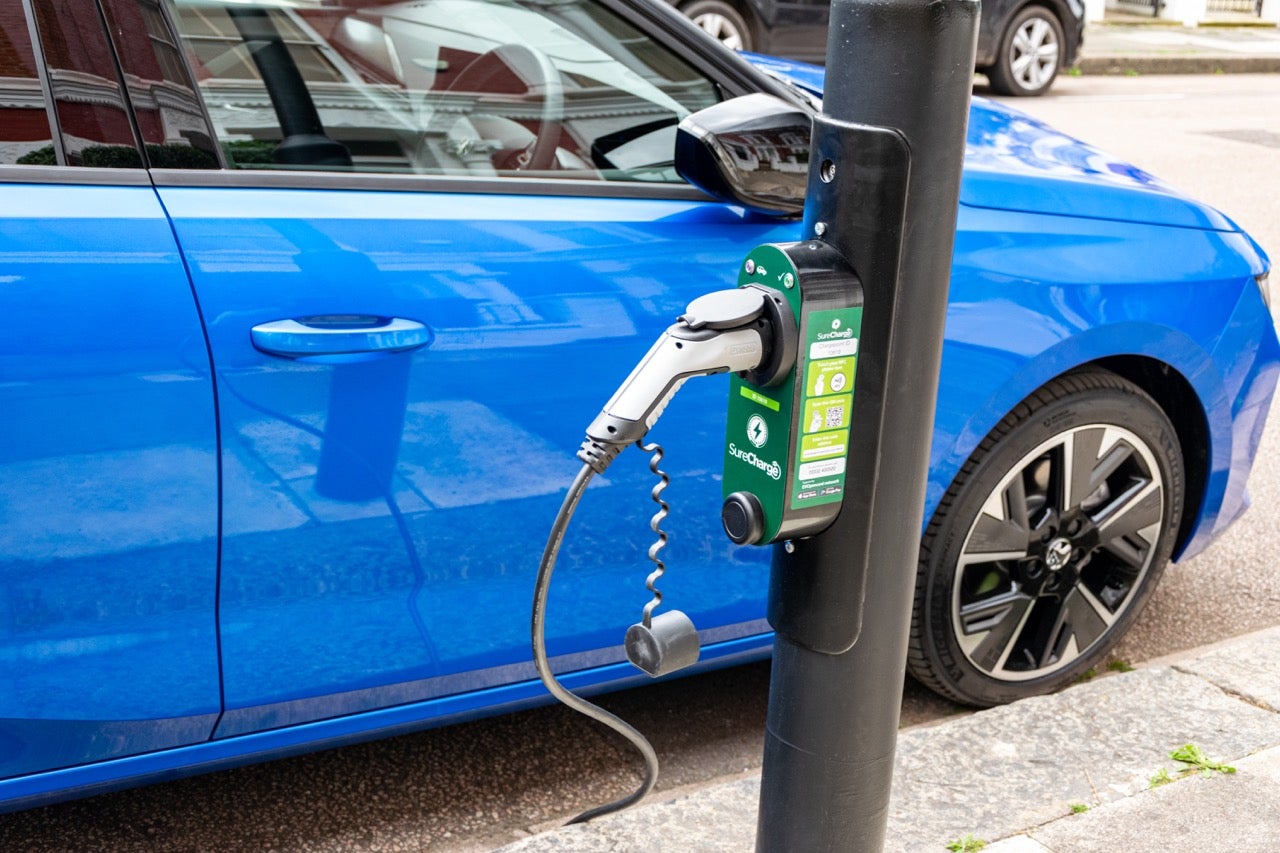“Can I charge my electric car in the rain?” - and other EV FAQs
Answering your most common questions around making the switch to an electric car

Switching to electric vehicles is an essential part of the UK’s drive to reduce carbon emissions and reach net zero by 2050. EVs have no tailpipe and therefore don’t emit emissions, meaning they’re much healthier for the environment. On average, they’re also cheaper to run compared to petrol and diesel vehicles, and aren’t subject to congestion charges in busy areas where drivers are being charged for driving polluting vehicles.
But, for the transition to EVs to be rolled out at scale, residential charging infrastructure must be built at speed, so drivers can charge their vehicles as easily as they do when refilling their tanks at the fuel pump. As part of its Electric Streets of Britain initiative, Vauxhall has partnered with supermarket giant Tesco, to offer new EV customers a year’s free charging whenever they visit a store in the UK. We’ve also teamed up with Vauxhall to answer some of the most common EV questions…
Can you run an EV charging cable across the pavement to your car?
If you don’t have a driveway, it’s legal to run an EV charging cable across the pavement to your car. But the highway act gives local councils the power to remove any cables they believe could pose a trip hazard to the public or potentially cause a fire.
What are my EV charging options if I live in a top floor flat?
If you have a dedicated parking space you should be able to install your own charging point. You can also apply for an OZEV EV Chargepoint Grant to reduce the cost of installation by £350. If you don’t have access to a parking space, other options include charging points on residential streets and at supermarkets and petrol stations. You can nominate your street on-street EV charging at electricstreets.co.uk.
Should you start your vehicle during charging?
When you begin charging, you must turn off your EV. However, once the charging has started, you can turn the engine on to use things such as the heaters and radio. You can even play games using your vehicle’s infotainment system! But power steering and the ability to move the vehicle will be disabled.
What happens if I run out of charge mid journey?
Your EV will give you plenty of advance warning if you’re running low on charge. Typically, your dashboard will alert you and if your battery drops below 5 per cent the vehicle’s navigation system will kick in and direct you to your nearest charging point. At this point you’ll also be given an estimated range based on your current levels of charging. Once you hit 0 per cent, you’ll typically be able to drive for a further five miles before you activate turtle mode. At this point, you’ll only be able to drive at around 20 miles per hour and only the car’s basic features will be available.
What do the different charging speeds mean?
There are four different charging speeds for electric vehicles – slow, fast, rapid and ultra-rapid. These refer to the power outputs and therefore EV charging speeds, available to charge an electric vehicle. Power is measured in kilowatts (kW). Some EVs can be charged to 80 per cent battery in just 30 minutes, but the speed is dependent on your vehicle model and charging speeds available at your charging station. A kilowatt hour (kWh) is a unit of energy and is used when talking about electric car battery capacity and the amount of energy put into the battery from the charger.
What happens to old electric car batteries?
EV batteries are expected to have a lifespan of between 100,000 to 200,000 miles and most manufacturers offer warranties of up to eight years for EV batteries. When batteries begin to wane they enter a second life and can be used to store power generated by solar panels, which can then be used to power things such as drink fridges, food warmers and fresh food counters inside stores. At the end of their working life, batteries can then be recycled.
Can you charge electric cars in the rain?
EV charging points are designed to be used in all weathers and are entirely waterproof, so you can use them safely in all weathers, including the rain.
Does hot or cold weather affect vehicle range?
A new study of five EVs by AAA has found that temperatures can sap electric car batteries, temporarily reducing their range by more than 40 percent when interior heaters are used. High temperatures can also reduce range temporarily, but by a smaller amount compared to cold weather, with the range returning to normal in more comfortable temperatures. EVs may be preconditioned to the perfect temperature from wherever you are.
Can EVs be re-sold?
Yes. EVs are subject to the same depreciation in value as petrol and diesel vehicles as a result of age, mileage, service history, battery condition and various other factors. But EVs are very much in demand so are likely to retain their value better than petrol and diesel vehicles.
Where do I charge?
Most people charge at home, even if they don’t have a driveway and you can also charge at your local Tesco or at destination chargers across the country.
If you currently drive an electric vehicle or are considering making the switch in the future, take 30 seconds to fill in the Electric Streets survey and help create an up-to-the-minute map of demand so the UK can power towards its targets.
Register your charging needs below, or visit electricstreets.co.uk for more information.
Subscribe to Independent Premium to bookmark this article
Want to bookmark your favourite articles and stories to read or reference later? Start your Independent Premium subscription today.